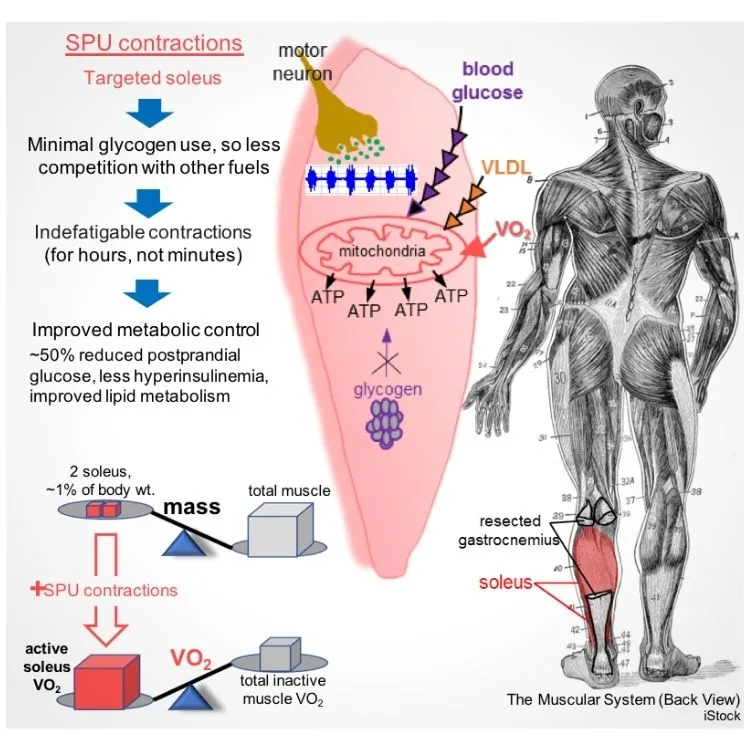From the University of Houston (and published at Elsevier's iScience, September 16):
Discovery Unlocks Potential of 'Special' Muscle'Soleus Pushup' Fuels Metabolism for Hours While Sitting
From the same mind whose research propelled the notion that “sitting too much is not the same as exercising too little,” comes a groundbreaking discovery set to turn a sedentary lifestyle on its ear: The soleus muscle in the calf, though only 1% of your body weight, can do big things to improve the metabolic health in the rest of your body if activated correctly.
And Marc Hamilton, professor of Health and Human Performance at the University of Houston, has discovered such an approach for optimal activation – he’s pioneering the “soleus pushup” (SPU) which effectively elevates muscle metabolism for hours, even while sitting. The soleus, one of 600 muscles in the human body, is a posterior leg muscle that runs from just below the knee to the heel.
Published in the journal iScience, Hamilton’s research suggests the soleus pushup’s ability to sustain an elevated oxidative metabolism to improve the regulation of blood glucose is more effective than any popular methods currently touted as a solution including exercise, weight loss and intermittent fasting. Oxidative metabolism is the process by which oxygen is used to burn metabolites like blood glucose or fats, but it depends, in part, on the immediate energy needs of the muscle when it’s working.
“We never dreamed that this muscle has this type of capacity. It's been inside our bodies all along, but no one ever investigated how to use it to optimize our health, until now,” said Hamilton. “When activated correctly, the soleus muscle can raise local oxidative metabolism to high levels for hours, not just minutes, and does so by using a different fuel mixture.”
Muscle biopsies revealed there was minimal glycogen contribution to fueling the soleus. Instead of breaking down glycogen, the soleus can use other types of fuels such as blood glucose and fats. Glycogen is normally the predominant type of carbohydrate that fuels muscular exercise.
“The soleus’ lower-than-normal reliance on glycogen helps it work for hours effortlessly without fatiguing during this type of muscle activity, because there is a definite limit to muscular endurance caused by glycogen depletion,” he added. “As far as we know, this is the first concerted effort to develop a specialized type of contractile activity centered around optimizing human metabolic processes.”
When the SPU was tested, the whole-body effects on blood chemistry included a 52% improvement in the excursion of blood glucose (sugar) and 60% less insulin requirement over three hours after ingesting a glucose drink.
The new approach of keeping the soleus muscle metabolism humming is also effective at doubling the normal rate of fat metabolism in the fasting period between meals, reducing the levels of fat in the blood (VLDL triglyceride).
The Soleus Pushup
Building on years of research, Hamilton and his colleagues developed the soleus pushup, which activates the soleus muscle differently than when standing or walking. The SPU targets the soleus to increase oxygen consumption – more than what’s possible with these other types of soleus activities, while also being resistant to fatigue.So, how do you perform a soleus pushup?.....
....MUCH MORE
Again, the paper itself via the U.S. National Institutes of Health, National Library of Medicine:
A potent physiological method to magnify and sustain soleus oxidative metabolism improves glucose and lipid regulation
